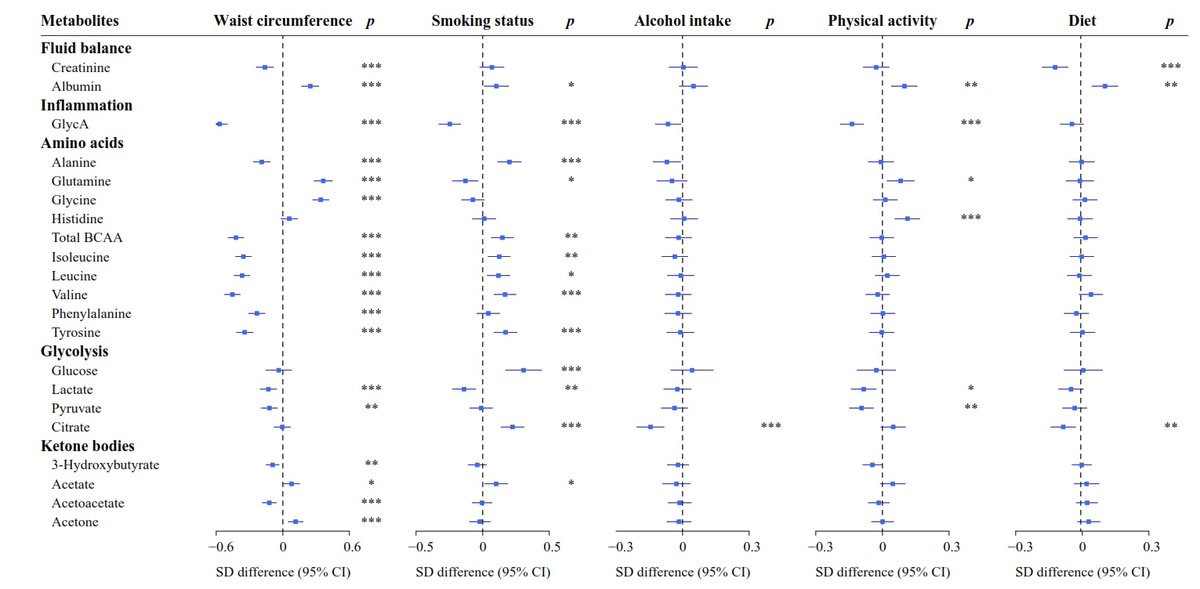
This one found that the association between obesity and cardiovascular disease is mediated by the triglyceride glucose (TyG) index, a surrogate marker of insulin resistance. 

- TyG index: ln (fasting triglycerides (mg/dL) × fasting glucose (mg/dL)/2).
- The proportion mediated was 47.81% for overweight, 37.94% for general obesity and 32.01%, 35.02%, and 31.06% for central obesity measured by waist circumference, waist-to-hip ratio, and waist-to-height ratio, respectively.
Insulin resistance mediates obesity-related risk of cardiovascular disease: a prospective cohort study (open access)
doi.org/10.1186/s12933…
#Obesity #InsulinResistance #Triglycerides #MetabolicSyndrome
doi.org/10.1186/s12933…
#Obesity #InsulinResistance #Triglycerides #MetabolicSyndrome
• • •
Missing some Tweet in this thread? You can try to
force a refresh













